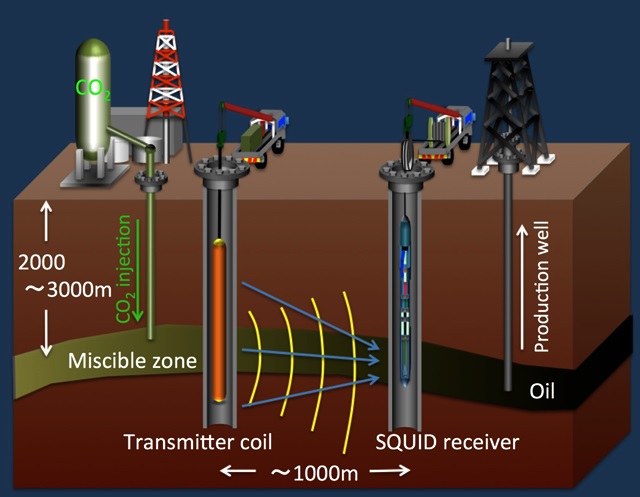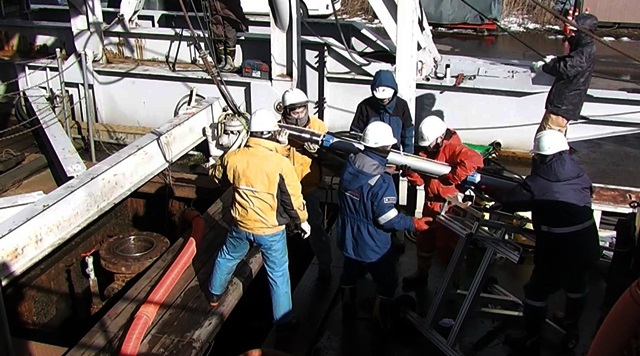超電導センシング技術研究組合(Superconducting Sensing Technology Research Association; SUSTERA)

Home > Technology > EOR monitoring
#Development of fundamental technology for cross-hole electromagnetic system for use in monitoring of CO2 EOR
Enhanced oil recovery (EOR) utilizing CO2 is an epoch-making technology for efficient production of oil. To control EOR, it is important to improve accuracy of monitoring technique. The electromagnetic (EM) method is expected to improve the accuracy of monitoring by combining with conventional seismograph and gravity methods. Application of SQUID sensor with frequency-independent ultra-high sensitivity would enable us to perform cross-hole EM monitoring of a CO2 injected oil stratum in steel-cased wells with the distance more than 1000 m.1) Fundamental technology to realize a cross-hole EM system has been developed in commission by JOGMEC. A SQUID receiver system consisting of three-component HTS-SQUID sensors, a liquid-nitrogen Dewar, a SQUID-control circuit, and control and communication electronics which are implemented in a plastic outer vessel 2) with pressure resistance over 70 MPa and temperature resistance below 200 °C has been developed. In a field test, this receiver system was put into a steel-cased well filled with water to the depth of 300 m, and observation of magnetic signals generated by a transmitter coil placed in a distant well was successfully confirmed.3)
1) JP Patent Application 2013-141627
2) JP Patent Application 2013-134809
3) To be presented at ADIPEC2016 and ASC2016.

Image of cross-hole electromagnetic logging system using a SQUID receiver.

Test of developed SQUID receiver at JOGMEC Kashiwazaki test field.